 Facebook
Facebook
 X
X
 Instagram
Instagram
 TikTok
TikTok
 Youtube
Youtube
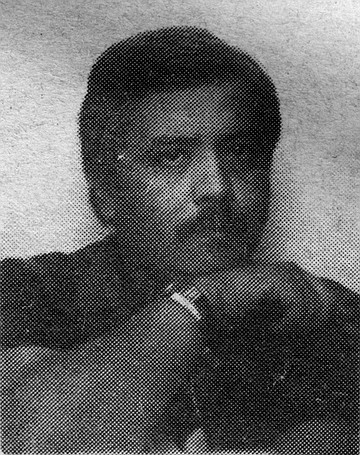
A number of years ago, I was persuaded by a guileful siren with designs on the music biz to share my lowly downtown apartment for “a couple of days” with the great but virtually unknown jazz balladeer Earl Coleman. Why a singer of near-legendary stature among critics would choose to bunk in a hovel with a semi-professional writer of limited prosperity should have made me suspicious. But here was a chance to spend time with a survivor of the swing-bop wars and the man who had recorded “Dark Shadows” with Charlie Parker and Tour de Force with Sonny Rollins.
Predictably his fortunes in San Diego proved dismal. In two guest appearances with guitarist Bill Hollman, one at City College and one at Chuck’s Steak House, the response was cordial but hardly monumental. From that point, Coleman worked a monthlong engagement in my apartment. The manipulator who had encouraged him to come here from New York abandoned him, and a combination of inertia and forlorn nostalgia set in. His time was spent lying in bed listening to Nat Cole and Dexter Gordon, amid the bric-a-brac of old newspapers, record jackets, clothes, and other emblems of squalor, staring at the ceiling and citing a common fallacy (“I thought writers made a lot of money”).
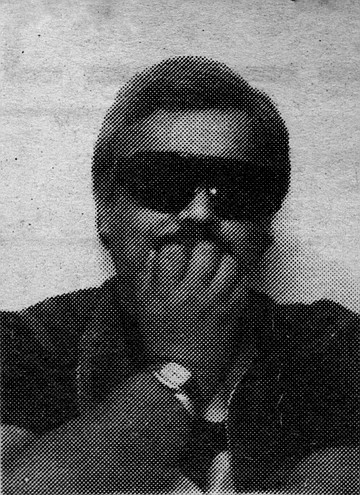
With little else to do, he spun long, fascinating semi-soliloquies about Bird, Lady Day, Sarah Vaughan, Eckstine, Cole, Jefferson, Bing Crosby, George Wein, club owners, record producers, drug addiction, and racism in the music business, all detailed with the pugnacity and authority of a punch-drunk participant.
But Earl grew tired of eating wienies and rice and watching Beaver with me, so he wired his girlfriend for fare home. As I deposited him at the Greyhound depot, we tentatively agreed to collaborate on a biography, an exciting prospect aborted when discriminating thieves pilfered my tape collection.
I never heard from Earl again, but in the last couple of years, he has released a new album and has had an old Riverside set reissued.
An occasional mention in New York journals attests to his continued activity. Sadly, the proposed biography remains the big one that got away.
His name: Peter Graham, the former operator of the San Diego Sports Arena. The local media ripped him from one end to the other during his outspoken 14 years in San Diego. The media seemed to be angry with him when he turned the arena around after long-time local favorite Bob Breitbard failed. One local writer even tried to blame Graham for the loss of the NBA Rockets, forgetting that Peter wasn’t even around when Breitbard sold the Rockets to Houston. Graham was wrongly blamed for everything from the loss of the Republican convention and the Gulls hockey team to the departure of the NBA Clippers, with no credit given for his bringing the NBA Final Four tournament and two hockey teams to the city, bringing back the NBA in 1978, financing the Ali-Norton fight here, and making financial concessions to the SDSU Aztecs and the struggling Sockers.
Graham is a man who likes his scotch, tells the truth, and refuses to cater to the press. He is brash, arrogant, opinionated, and loyal to his employees, as he proved when he retained Les Land after Land publicly criticized him. In the end, Graham’s own fellows on the Graymont Corporation board fired him. Perhaps they couldn’t stand the heat of the media and caved in with a gutless display of disloyalty. It’s a story I’ve always wanted to write but never did.
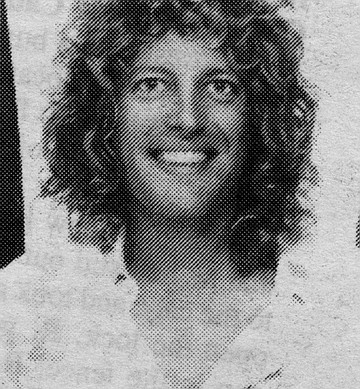
When I heard that Hunter S. Thompson would be coming to San Diego in January of 1988 for a Super Bowl Eve lecture, I resolved to write a story about his visit. My plan was to follow the celebrated gonzo journalist around town and chronicle his adventures in a rambling, first-person narrative not unlike his own Fear and Loathing in Las Vegas. But since Thompson had made it clear to the promoter that he didn’t want any reporters tagging along, the only way I could get my story was to go undercover.
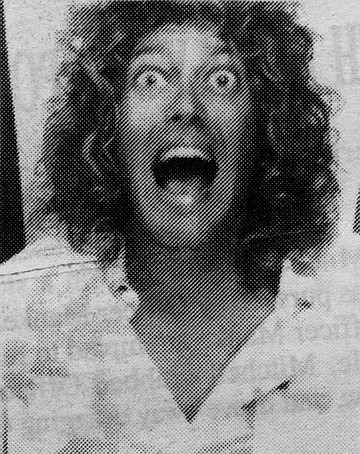
So I did. Passing myself off as the promoter’s assistant, I picked up Thompson at the airport, and for the next three days — and nights — I was his constant companion. He was every bit as outrageous as I had expected him to be, trashing his hotel room, throwing temper tantrums in restaurants, doing drugs, drugs, and more drugs. But he was also a troubled man, a lonely man, and we had some pretty deep and personal conversations. He literally cried on my shoulder about how his girlfriend wasn’t returning his phone calls, about how hard it was to live up to his image, about how he hated speaking engagements and could only overcome his shyness by getting real fucked up.
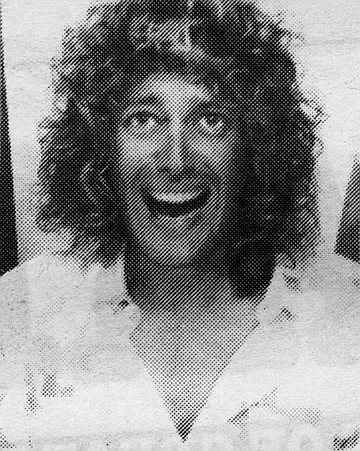
The closer we became, the more ashamed I was about my deception. Hunter never would have opened up this way to a reporter; he was clearly going through some rough times, and he desperately needed someone to sound off to. For whatever reason, he trusted me, and I could not, in good conscience, betray that trust. So I never wrote the story.
Late one summer afternoon in Ocean Beach I was headed toward the sand with my beach chair when a well-dressed man in his 60s hailed me to stop. He said, pointing, “Is that the Pacific Ocean there?”
I looked him over. Not a drunk. Good haircut, neat, retiree slacks and sport shirt. He was standing next to a dirty Ford Falcon, and sitting on the driver’s side was a woman who looked like a peasant girl from Mexico. She was wearing a washed-out calico shift, and her hair was braided in a thick, black rope. She was looking at me with an uncertain smile.
I said it was the Pacific Ocean.
“You sure?” he said, tilting his head toward me, eager for sincerity.
No doubt in my mind, I said.
He looked back at the girl with a told-you-so laugh, and she jerked her head away. He thanked me and headed back to the car, to the passenger side.
Later, on the beach, I tried to figure. He was a pensioner in Guadalajara who had run off with the servant. It got to be her turn to drive, and she had become so lost, they didn’t know what coast they were on.
Nah.
He had bribed her to bust his way out of a convalescent home in Reno, and now she was scared and was trying to scare him, telling him she’d driven down to the Sea of Cortez or maybe the Gulf of Mexico. Yeah, that was it: He was checking to see if he wasn’t in goddammed Texas.
Now that’s a story, I thought, and ran back to where they had been, but they were gone.
First lines of the novel I haven’t finished:
“I’ve never my whole life once been with anyone who took it slow enough,” she said.
“I will.”
“You then. Okay.”
1) Well, maybe “The Next Time,” but Henry James already wrote that. (Is this a trick question?)
2) Every story I ever did write, but somehow revised and improved more in accord with what I meant to write. (If I could have written it, I would have.
3) A candid discussion of the conditions under which San Diego film critics are granted admission to advance screenings. Whereas New York or Los Angeles ones are granted this in private screening rooms in the company of their fellows, we locals must jam in with holders of free passes doled out by pop radio stations — a method that seems guaranteed to round up a multitude of nitwits. Still, I wouldn’t want to say something to get me crossed off the invitation list.
4) As either a substitute or an atonement for No. 3, an orison of thanks that I am commissioned to write about movies instead of theater or music; or in other words about people who live in New York, Los Angeles, London, Tokyo, etc., instead of down the block.
5) A review of — oh, let me see, out of all the movies that could have come to town but haven’t — Alain Resnais’s Love unto Death. If and when that gets knocked off, a mountain remains.
6) My retirement announcement.
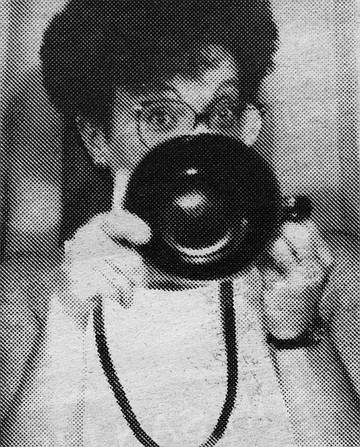
To temper the angst that staggered me when I left San Francisco, I went looking for a cup o' joe. I found burnt brew and scorched milk. They called it cappuccino.
Far from home and lonesome, I wandered cafés. When the bean was right, the foam was airy. Not glass mugs, damnit, cups and saucers. Bright Italian ceramics.
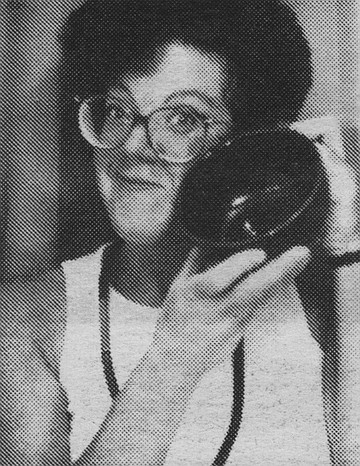
Then I found it. Right in my neighborhood, where Washington meets India, I pushed open the door and smelled home — French roast beans, the hint of chocolate and cinnamon. People sat outside at round tables, reading, talking, watching the cars on I-5.
“A double cap, for here,” I said, watching her pull hard on the handle, hearing the high pitch of the spray steaming milk. She slid the caramel-colored cup and saucer my way, adding a small spoon.
Creamy foam perched on the cup like meringue. Tvo fingers of espresso seeped brown around the edges. I stirred it slowly, not rushing the relationship of coffee to milk. It tasted like North Beach.
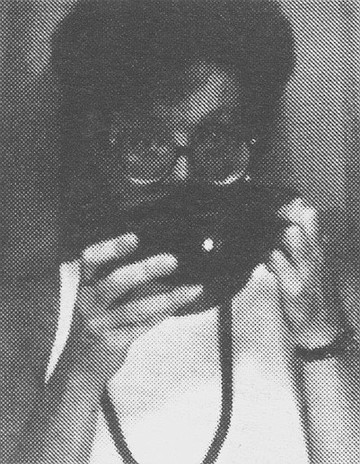
I had seen my relocation as a sad story, but now my cup was full. I’m there most mornings, sitting in a red chair, sipping a single. My suntanned hands grab the “Calendar” section of the LA. Times. How did I stand that fog in the summer?
In the many years that I’ve lived in the beach area, I’ve only walked along the edge of the ocean without ever entering it. The sight of the smallest wave would put me in a panic; I couldn’t gaze at posters of surfers riding the white water without experiencing fear. And I did no better in a swimming pool. About five years ago, my sons took me to Las Vegas for Mother’s Day. As we sat around the pool, with me a fixture in a chair, I was suddenly and for the first time intolerant of my phobia and resolved to do something about it.
The memory of my swimming lesson a few weeks later remains brilliant: I wore the top of a wetsuit, a life-saving jacket, and, absurdly enough, inflated armbands that are used to keep small children afloat. And I stood knee-deep, the sole occupant of a private pool, weeping copiously. During the course of that summer, I shed tears equal to the amount of water in the pool, but at the end of it, I shed my life jacket.
It took two more summers before I was able to go in without flotation devices. The woman whom I call “my swimming teacher” never lost faith in me; and during the moments when I lost all courage, she would croon, “Now, we’ll just do a little froggy. Now we’ll make a windmill. Now I’ll show you how to try an arrow.” After five summers, I am water-safe, can float on my back, side-stroke the length of the pool. The feared arrow — pushing off and floating face-down — is now my favorite.
This is not like winning the Rough-Water Swim. Except for me.
I grew up worshiping the Beat writers, and it was thrilling to know that, as a journalist, I was in a position not only to meet many of my heroes but to sit down and talk with them at length. Living and working in the San Francisco area made this especially feasible. Over the course of a couple of years, I managed to interview the poets Gregory Corso, Michael McClure, Allen Ginsberg, and Philip Whalen. But I still coveted two: Gary Snyder and William Burroughs.
Earlier this year, I thought I finally had Snyder in my crosshairs. A struggling arts magazine asked me to do an interview with the Pulitzer Prizewinning poet, who was slated to be lauded at a local booksellers’ function. I tracked him down there. When I told him I had interviewed his great good friend Whalen, he politely asked me to send him a copy of that piece. I did so; he wrote to me saying he’d like to get a better idea of the sort of questions I planned to ask him. Once again, I complied. A bit later, I received a postcard from Snyder’s Sierra redoubt, in which he declined to be interviewed. “I write my own prose,” he said.
A few weeks ago, I picked up the local newspaper’s Sunday magazine section and found Snyder’s four-color portrait on the cover, with an interview piece inside. Oh, well. Maybe Burroughs will happen by one of these days.
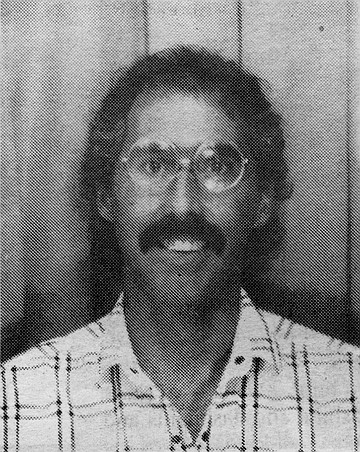
A year and a half ago, I made my annual trek to a beach in Baja California, a harsh stretch of coast in the most desolate part of the peninsula. The wind blows constantly there. Soon, a fine dust coats your teeth, collects in the comers of your eyes, turns your skin gray. After a few days of tidepool baths, your hair feels like wire. So why go? The place has a brutal kind of beauty that soothes. And the surf is excellent.
I arrived at sunset, after a 14-hour drive. A young woman greeted me. Her face was sunburned and wind-chapped, her nose dripped, and her hair had been weathered into bleached steel wool. She seemed hungry to talk.
Annie had been living in a tent on that beach for eight months. “Now my life revolves around the tides,” she said. High tide for fishing. Low tide for finding abalone, washing dishes and laundry, shampooing hair. Though she seemed lonely, she didn’t regret leaving behind the big-city frenzy. “God didn’t mean for us to drive around in Mercedes-Benzes and Porsches.” Her only link with modern life was the radio news out of Los Angeles. “And God didn’t mean for us to get shot off our front porches either”
As I left for home a week later, she told me, “I always wanted to be born 100 years ago. This is almost as good.” Several months later, I drove back down to interview her for a story. She had moved on.
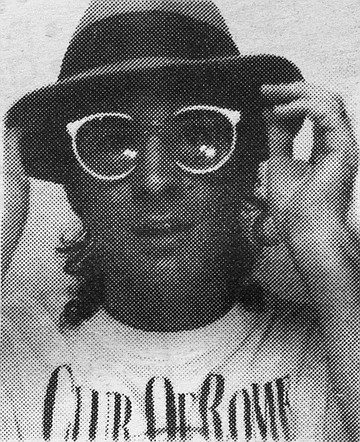
When I was a kid, my heroes were Woodward and Bernstein. “Nixon” was a swear word. I hurried off to journalism school, eager to expose government obscenity and maybe be a big hero myself one day. But it was not to be.
When I finally became a journalist, Iran-contra was going down: a scandal so dark and insidious it makes Watergate look like a fraternity panty raid.
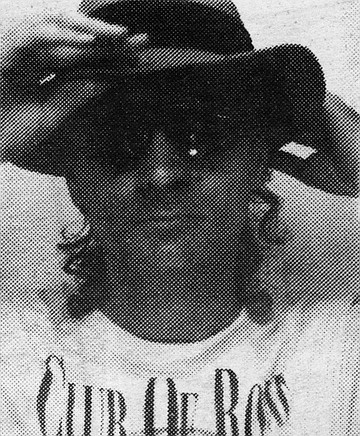
Now, the bad guys were the heroes. Ollie was applauded. Ronnie was lauded. No resignations. No flurry of legislation. No jail sentences. Journalists became the bad guys for always bringing it up. Editors don’t want to hear about it. Last month, Christie Institute head Danny Sheehan blew into town and read from senate hearings. Contras smuggled drugs. Ollie knew all about it. CIA planes flew loads of guns to Costa Rica and brought back planeloads of cocaine for U.S. consumption.
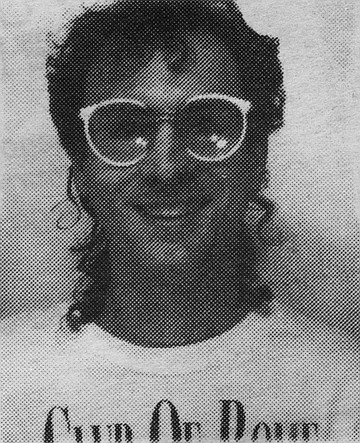
I was the only journalist in the auditorium that night. All the papers and TV stations told the local Christie Institute organizers things like: “Yeah, Sheehan’s probably right, but we won’t be coming.” Not even for their own education, journalism be damned.
So I didn’t write my big hero piece. The Christie Institute still chases these gangsters in unsung obscurity. Americans still think Bush wants to stop drug traffic. And Reader cover stories still go to gall bladder operations and what they did every day in 1939.
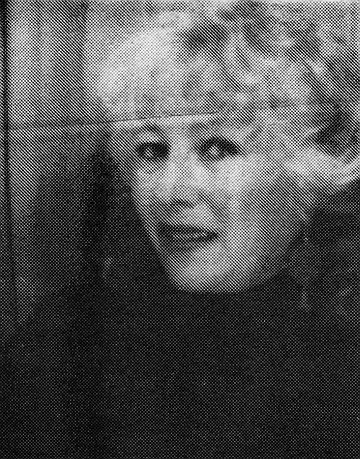
Gail and I used to hitchhike to the Hilton Hotel with our children, caravan style. We used the facilities as if we were Conrad Hilton’s daughters. It was at the Hilton pool that I noticed a bump the size of a kumquat peering over Gail’s bikini top. Later, when I telephoned the Anderson Clinic in Houston, where she was recovering from radical surgery, she talked about apricot pits and faith healers. By the end of that year, Gail had gathered her six children and whatever strength she had left and flew to Pittsburgh, where her ex-husband was working, so the family could be together when she died.
The next summer, a man who had inspired me to write limericks keeled over dead. In September, when our neighbor returned home from his first day at junior high school and opened his closet, he found the overdosed body of his 16-year-old brother. I told the news to a confidante; her husband’s recently cremated ashes lay in a cigar box on the table where we were eating clams. The following Monday, en route to return a library book, my father suddenly collapsed on Orange Avenue. When he reached Villa View Hospital via ambulance, he was pronounced DOA, the coroner said.

Within months, three of my friends’ teen-age sons were killed instantly when trucks collided with their motorcycles. During that decade, death was everywhere. At supermarket check-outs, Elvis’s corpse was on tabloid covers. Our next-door neighbor tortured and killed his two-year-old stepson. On Christmas Eve, the friend who’d notified me of Gail’s death called from Berkeley to announce that two thirds of her own family had just been wiped out in Jonestown.

I wanted to write about a woman I’ll call Sandy; and, actually, I did write about her. But I wrote a short fictional account of a crime she committed as a teen-ager, and it was very bad fiction. If I ever see her again, I’ll ask her to tell me the story again, in fine detail, start to finish, and then I’ll try to write it right.
The last time Sandy called her best friend in San Diego, she was desperate in San Francisco, broke, and no doubt in trouble with the police again. For the past year or so, whenever she’d visit town, Sandy would tell people she didn’t use crystal meth anymore; the friends she’d once hung with didn’t believe her. Sandy wasn’t so crazed as some who get chewed up by crystal. But she had been using hard drugs since she was a kid — she’d laugh, telling how her foster mom smuggled speed to her when she was in CYA.
The California Youth Authority hosted Sandy for a time when she was a teen-ager. She and a girlfriend had gone into a liquor store, robbed the clerk, at gunpoint, I think. The two took the money and then locked the clerk in a walk-in cooler. As they left, Sandy started feeling bad about the guy shivering in the cooler. She went back and let him out. Good for him, bad for her and her friend. They sped off; he called the police. Sandy warned her friend to get off El Cajon Boulevard and onto the side streets, but her friend kept zipping down the Miracle Mile. And within minutes, those two dollies were BUSTED.
Samson pulled down the Temple of Dagon on the heads of the Philistines. Quite a few survived. Their descendants now live in San Diego, where they misbehave regularly during opera and orchestra performances at the Civic Theatre and Symphony Hall. They buzz and sibilate during soft passages, they shout egregiously at one another during the loud ones. They jingle their bracelets, tear open cellophane-wrapped candies with painful slowness, cough violently during delicate pianissimos, and smile inwardly as their beeping digital watches sound off on the hour. They have never had an aesthetic epiphany in their lives and are determined no one else will either.
Sometimes their antics defy credulity. One couple recently brought a portable, battery-operated television set to the opera. They followed a football game, the pale, bluish light from the screen flickering over the faces of their immediate neighbors. During breaks in the performance, distant confederates would cry out, “What’s the score?”
More normally, the boredom and boordom of such creatures manifests itself in lengthy, noisy perusals of the program booklet, even in the dark; they flip the pages back and forth as if engaged in a profound research project. When truly desperate, they resort to snacking on something. I have seen, heard, and smelled them eating unshelled pistachio nuts and sunflower seeds.
The ballet, of course, presents such cultural vandals with the irresistible temptation to bring along their hyperkinetic kiddies. A new Samson is sorely needed.
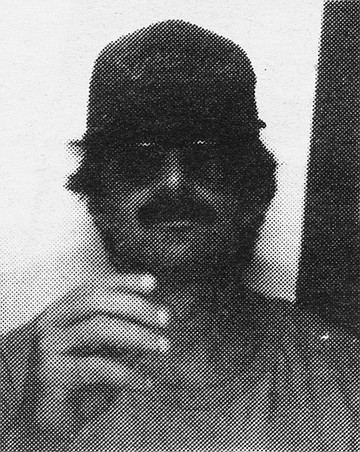
In 1981 I proposed a story about the American Medical Research Expedition to Mount Everest. Although AMREE’s leader, John West, and another participant, Christopher Pizzo, were physicians at UCSD and Scripps Clinic, respectively, my editor said the piece wouldn’t be local enough. But secretly, I cradled the hope that if I wrote the story and it was interesting and well written enough, and if I was lucky enough to submit it at the right time, the editor still might bite.
I read up on Everest’s history and bought a tape recorder. I got help wrapping my one tie around what passed for my one dress shirt and sallied forth into the circles of high academia and adventure, attending lectures by West and finally arranging interviews with both West and Pizzo. After one of those interviews, I even bought from Pizzo a numbered picture he’d taken of Makalu peak at sundown, all godly-gold and spectacular.
I struggled life and death to write what I had: some very basic scientific poop about AMREE’s unique purpose, a bit of history, some amazing tales about AMREE’s luck (Peter Hackett’s slip at the Hillary step, a potential fall of 8000 feet more or less straight down, his foot catching on a rock and, while upside down, Hackett’s grasping for a grip in the snow, finding a secured rope left over from a previous expedition; Pizzo using a tent pole in place of his lost ice pick and finding one left over from a previous expedition; the woman’s body left over from a previous expedition, frozen facedown and perfectly preserved).
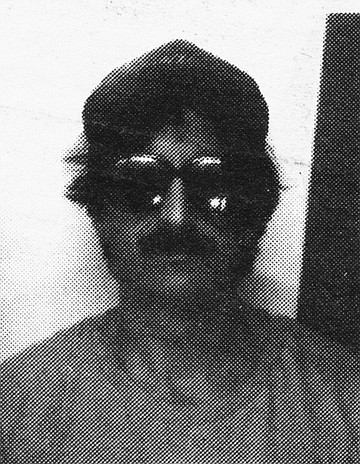
Neither the Reader nor California magazine wanted the story, because it wasn’t a San Diego or a California story. I wonder whether either of them thought it was any good. I was afraid to ask. But I’ll use the compensation from this piece to frame that picture I bought from Dr. Pizzo, a reminder that one man’s success can be another’s failure.
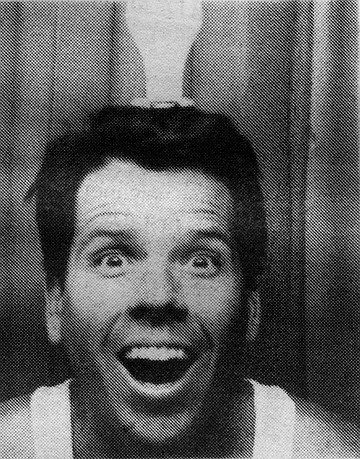
I met Thomas Earle last December in a Hillcrest laundromat, where he and a buddy had fled the night chill. They were homeless alcoholics. Earle lay curled up next to the dryers. His companion paced back and forth, flailing his arms and mumbling obscenities. People edged past them, eyes fixed on coin slots.
“Leave the nice people alone,” Earle admonished his friend. He spoke with a British accent. I stole a look at him. His face was ruddy, with a road map of capillaries and a long Irish upper lip.
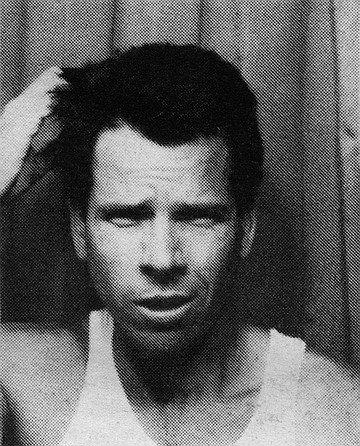
“Okay, what movie is this from? ‘Play it, Sam.’ ” His friend shook his head and uncapped a flask.
“Casablanca.” Earle cackled triumphantly. “Okay, here’s another one....” And so it went, for the next half hour. I soon found myself volunteering answers.
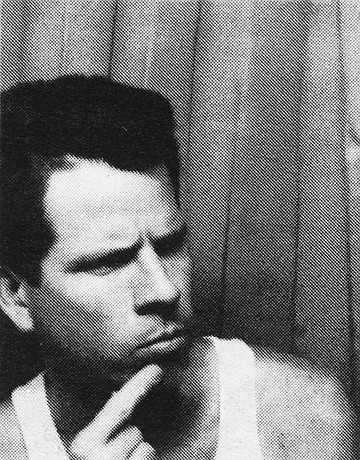
We sat and talked. Earle said he had been a film editor in Hollywood during the ’40s and claimed to have worked with all the big stars. Reagan. Bogart. Heston. He wanted to dry out and start working again, he told me. “I could get a job with Simon & Simon right here in San Diego!”
I didn’t tell him that except for the opening credits, the detective show was filmed in L.A. He helped me carry my wash out to my car. I shook his hand and pressed a bill into it. He wished me luck.
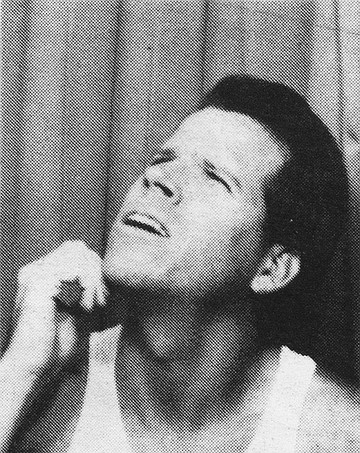
I wanted to write about Thomas Earle’s heady tumble from Lotusland to the streets of San Diego, but my editor dismissed it as just another homeless tale. I might still prove him wrong.
“Very, very interesting,” Dr. Finges said.
I was sitting up straight on his office desk, my mouth open. Dr. Finges stood before me in his white smock, bent at the waist, surveying inside my mouth. His crest of straight orange hair faced me at eye level, combed back from a glossy forehead.
“You can close,” he said.
I closed my mouth. He straightened, took a backward step, folded his arms. Spectacles magnified his eyeballs.
He addressed me. “As the constitution betrays the will, each psychic tool, each element makes happy residence in a sickened conceptual playground; pretty forms fall away, exposing the featureless sludge of unfiltered experience. The overwhelmed sensorium then retreats — as it must — to childhood’s magic, entrenching the most absurd symbolic substitutions, resulting finally in the characteristic pasty, pink sores that populate the oral lining.”
“I’ve been having dreams,” I said.
“Of course.” His face was sweaty. “I could recommend you for treatment at the institute, even if, as I’m told, the trustees no longer sanction my judgments.
Regardless, I tell my patients it is better to seek redemption within the paltry sphere of their own lives. For one thing, you never know what kind of doctor you’ll get.” White paint was peeling around the door frame.
“You are a journalist?” he asked. I nodded. “Yes.”
“You write about burglaries and fundraisers?”
“Uh, more like I do portraits of interesting things.”
“So. It is now perhaps necessary that you portray something exalted. Something high-flown, elevated above the mean exasperations of your temperament and class. A model of health to emulate.”
“Maybe an animal story.”
“Why don’t you write,” he said slowly, “about monks ”
“Are there monks in San Diego?”
“Might be.”
I left, pushing my way out the exit door, feeling the sun again. “Monks,” I thought, “monks.”
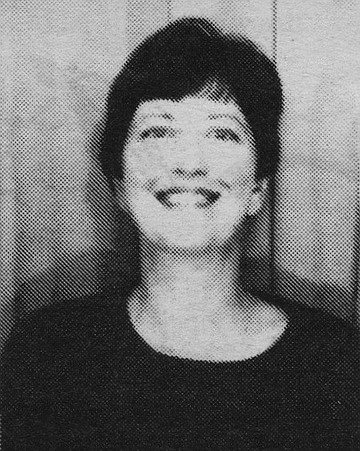
EL CAJON, March 11, 1975 -Patty Hearst, the abducted heiress-turned-bank robber, yesterday emerged from the shadowy realm of revolutionary politics by contacting El Cajon Daily Californian reporter Jeannette De Wyze. “I want to go home,” Hearst told the startled cub reporter.
Hearst revealed that she has been living in a Santee trailer park, her physical appearance substantially altered, for the past eight months. She told De Wyze that during that time she began reading the East County newspaper and was struck by the empathy and clarity of thought revealed in De Wyze’s articles. “Sure, I could pick up the phone and give Walter Cronkite my story,” Hearst said. “But he’s had a lot of big scoops. Why not help out someone whose career is just getting started?”
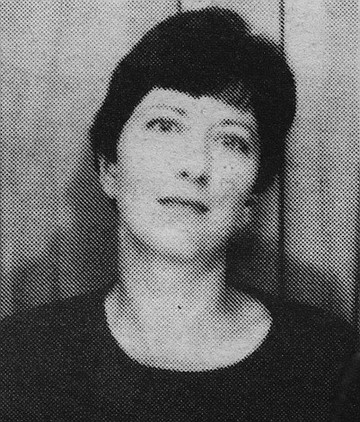
“I’ve dreamt about getting this call,” gushed De Wyze. “I was in a university journalism class when the news first came over the wire service that Patty was kidnapped. Ever since, I’ve felt close to the story. I started working for the Californian last year, and whenever things got really boring, I would tell myself that Patty could be living in some dump in Santee....”
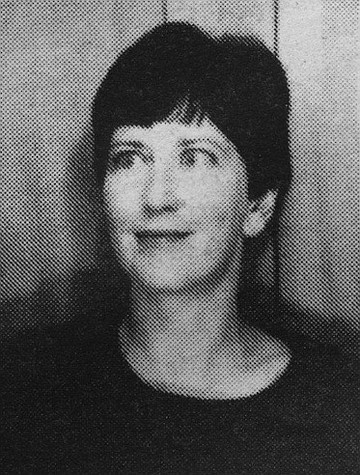
Hearst gave De Wyze a lengthy exclusive interview before calling the FBI and promised that the local reporter could cover her upcoming trial, collaborate on her autobiography, and write the screenplays for any movies or television docudramas chronicling Hearst’s bizarre saga.
The night had grown still now. Too still. The incessant song of the cicada had stopped. In the faint light of a new moon one could see from our mountain top bunkers in Pleiku across the grassy plains of the Central Highlands almost into Cambodia. I looked over my shoulder to a higher bunker to see my father, a visiting correspondent, who was covering my back with an M-60 machine gun. I was partial to the single-shot M-79 grenade launcher whose golden bullet had a kill-radius of 50 feet. My father and I had fought with each other on and off all my life. How odd to be in these mutually defensive positions in a war that we disputed. Suddenly, on my left front, a trip flare in our wire went off, and then all hell started breaking loose as we started taking fire and hit the claymores. But let me tell you how this whole thing all started.
Dad had long been a subscriber to every “Field and Game”-type magazine ever published. He didn’t like to hunt, but he liked guns, and fishing and flashlights and gadgets of all kinds. I liked his schedule and so I thought that being a writer might be pretty cool. He would admonish me that it was really hard work, but if I chose to do it, never, never to start a story as they did in his favorite magazines. You know, like:
“Bill and me should have known that we were in trouble in this kind of thick brush. The wind was at our back. We were sweating like pigs, and our wives could have smelled us at home for Chrissake. Suddenly there was a crashing sound and the next thing I saw was the enraged face and blood-red eyes of the grizzly just before its fangs tore into my flesh. The salty taste of my own blood swilled in my mouth. But let me tell you how this all started.”
Anyway, someday I may finish the Vietnam incident on Monkey Mountain with my father, but for the time being.... Got’cha, Dad!
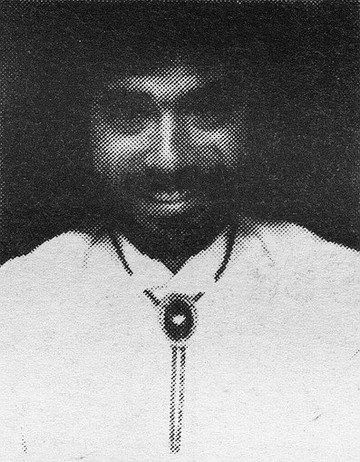
It was in September of 1988 that the item appeared in Tom Blair’s column in The Tribune: “John Brizzolara, whose potboiler Wirecutter was a big seller for Doubleday last year, has taken a job here to gather the atmosphere for the sequel.... Brizzolara’s working as a bouncer in a downtown topless bar”
This item, planted by a reporter drinking buddy of mine, had certain inaccuracies. I was working not as a bouncer but as a bartender, for one night, not researching anything. I needed the money.
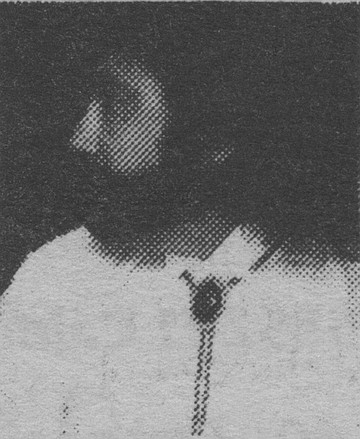
I had answered an ad for bartenders: a Kearny Mesa address. I showed up early at one branch of San Diego’s landmark flashdance emporiums. The guy who talked to me told me it looked good; his name was, say, Dick. Dick said he wanted to try me out behind the bar. I worked frenziedly until 2:00 a.m. I got very little ogling in. Dick collected the tips I had earned: $90. “It’s our system,” he said. “You’ll get it in your paycheck.”
“Do I get the job?” I asked Dick. “Yeah. Call me later in the week; I’ll put you on the schedule.”
Two tuxedo shirts, bow tie, a pair of black dress pants cost me $86. Dick avoided me for two weeks. No job. I heard he did the same thing to five or six other bartenders.
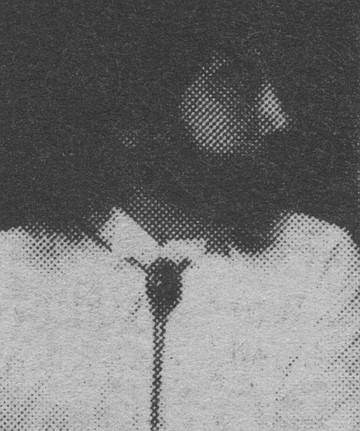
The story I wanted to write but didn’t is about how I found Dick’s address, went to the post office, and filled out a change of address form, shunting all his mail to Cairo, Illinois, for the next three weeks. That’s a federal crime; naturally, I didn’t do it, so I couldn’t write a story about how I did. If anything like that happened to Dick, it must have been one of those other bartenders.

I want to write lies. Big fat ones with no regard for the sacred principles of responsible journalism. I want to write things low, reprehensible, and truth-twisting. Piss on the gods of the press, I choose to blaspheme.
I want to write that my friends didn’t die. That their parents and children and dreams didn’t die. I want to change their stories so that they were never really robbed or raped; their wells weren’t poisoned and their lives weren’t shattered. No war, no cancer, no divorce.
I’d love to plant these hollow accounts and then by some magic, see them burst into truth. Little by little, then, I could fashion the New Reality wherein crime, suffering, and disease were anything but commonplace. By my words alone, I could banish the banality of evil, and there would be true power in my pen.
I realize this is hopelessly naive. I know that life is tough and bad things happen and maybe the best anybody can ever do is just to find and report the clear truth about it all and go on. Trying to write away humanity’s hurt only adds to the mess.
But the thought still troubles me. The stories I wanted to write, but didn’t, are falsehoods and fabrications. And no matter how much I want to write them, I can’t.
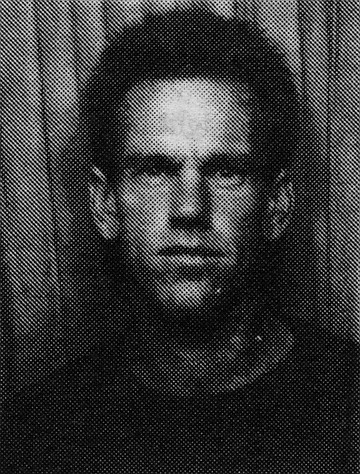
It’s the Fourth of July, and the wife and baby and I are tooling about up on Palomar Mountain. Spring comes late to the high country, even in these benign latitudes; and somewhere between nowhere and no place special, my wife spots a stand of shaded wildflowers that makes her let out a holler. I brake hard, hop out, and dive into the bush, camera and field guide in hand.
The flowers were lilies, the outrageous Lilium humboldtii, which, if you’ve ever seen them, look as foreign to the country as salmon spawning in Mission Valley. San Diego only has three native lily species; and for some time, I had been on the lookout for them, imagining, as a writer will, this private treasure hunt expanded into a clever, expository treatise. But I’ve never seen any native San Diego lilies again.
Well, it’s not “How I Spent My Summer Trout Fishing with Thomas Pynchon,” but what did you expect?
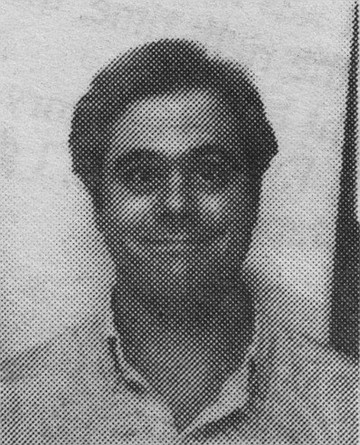
I always wanted to write a story about Sufi-dancing fruitarian dope-smuggling wife-battering white supremacist folk singers who lead double lives as corrupt politicians or defense contractors or greedy developers by day and cross-dressing illegal alien hypnotherapist fundamentalist skinhead hookers by night. But that sort of thing gets published every week in the Reader, so here are some other stories I really wanted to write but didn’t:
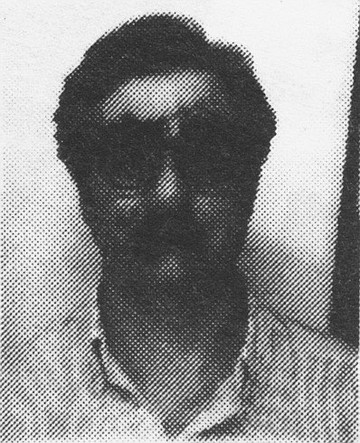
There was one about a man called the Mole, who lived in a sewer drain with a pet canary for over a year, subsisting on garbage and dead rats (a true story — I met him once outside the central library). And one about a Hollywood starlet who left her minks and diamonds to become a nun and work in a Tijuana jail (also true).
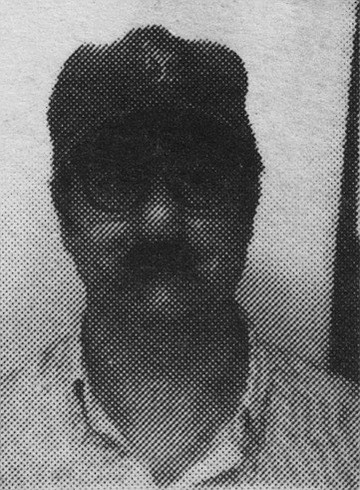
I was dying to reveal the Secret Life of Sheriff John Duffy and find out how much Gloria McColl spends on hairspray. And I kept looking for the perfect Reader events story, like a walking tour of East San Diego’s meth labs or a meeting of the Democratic Socialist Golf Widows of Scripps Ranch.
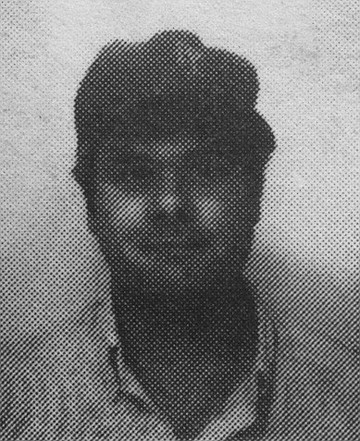
But if I had to choose, I would have written about what the killer whales at Sea World do at night or how such fantastic beasts as basilisks, amphisbaenae, leucrocuta, and yales roam the canyons by moonlight, gobbling up skunks and possums, and sometimes a moonstruck writer....
The story was about police dogs, and I was on a ride-along with an Oceanside cop: I didn’t tell about my seeing him coldcock a handcuffed Marine during an arrest, then taunt the kid when he started to cry.
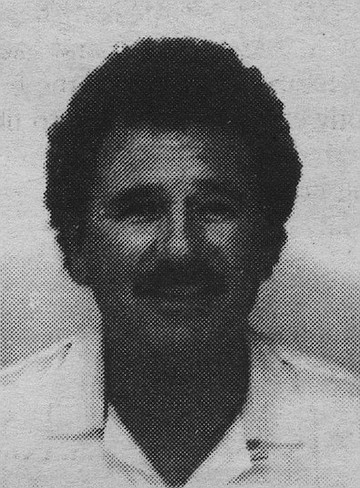
The story was about plane captains in a Navy fighter squadron: I didn’t tell about Ladies’ Night at the Miramar Officers Club, where I saw packs of desperate-looking single women pathetically climbing over each other to connect with arrogant, egomaniacal pilots.
The story was about a homosexual Catholic priest with a drug problem: I didn’t tell about why his former boyfriend came to us with the tale. It was for revenge over cutting off the boyfriend’s drug supply.
The story was about illegal migrants attacking border patrol trucks and helicopters with rocks: I didn’t tell about how the senior border patrolman who gave me a tour of the danger zones habitually referred to the migrants as “wets.”
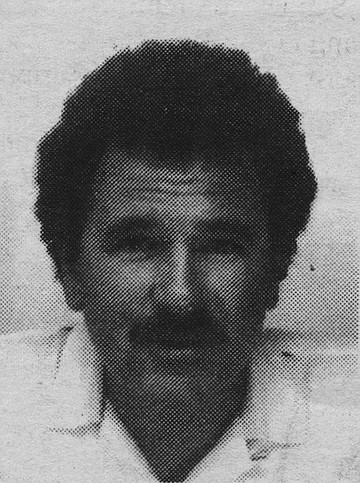
The story was about Southeast San Diego: The part about Urban League president Herb Cawthorne’s bombastic posturing in a speech before the Catfish Club left out my main impression. I thought he was using his position and the controversy over renaming Market Street in honor of Martin Luther King for personal aggrandizement and career advancement. But writing that might have been construed as racism on my part. Cawthorne has since left the Urban League, under mysterious circumstances, gone to work for the Greater San Diego Chamber of Commerce, and his passionate civil rights pronouncements have fallen silent.
The story was about Boy Scout summer camp: I left out the secret word repeated by new members during the super-secret induction ceremonies for the Order of the Arrow, an elite clique within the scouts whose members are mostly adult men. Blazing tomahawks couldn’t force the secret Indian word out of me, but I will divulge its translation: “To love each other.”
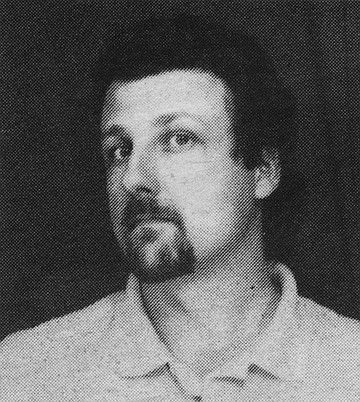
In the tradition of Mayor Maureen O’Connor’s recent sojourn as an incognito vagabond, my unwritten story required that I, too, adopt a temporary identity. To succeed in investigating the realities of municipal politics, I needed to impersonate the mayor of San Diego, tit for tat. If she could worm her way through our shabbiest streets anonymously, seeking the heart of homeless darkness, certainly a regular citizen like me could embark upon a clandestine journey through city hall, searching — at least — for my taxpayer-subsidized plane ticket to Russia.
I also couldn’t pursue this story single-handedly. I required support from an accomplice, a conspirator — an appropriate Sancho Panza or Boswell type. Not necessarily a Robin for my Batman or even a Rainman-ish savant; certainly neither a trusty Tonto nor a mischievous Cheetah (not to mention a chunky prattle-monger slurping Evian water).
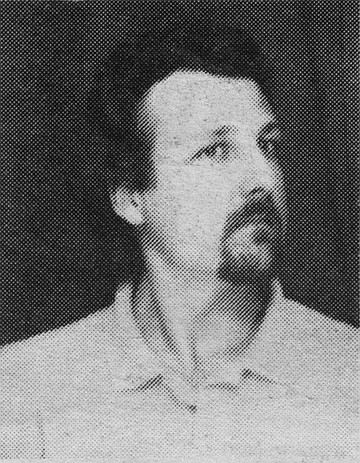
But whom to choose? Discouraged, I consulted with researchers at the downtown library (I assumed all those swarthy denizens studying books upside down and mumbling to themselves were researchers of some stripe — disguised Faberge egg handlers or more undercover politicians, perhaps). Speaking through a handkerchief, I inquired intently. No answers came. Instead, cryptic language, puzzling epithets, and vague incantations enshrouded me (mumbled by a gentleman pounding on a stack of atlases, or proclaimed by a wayfarer urinating across irreplaceable first editions in the Wangenheim room). And no tempting candidates for my affable amanuensis. The story goes untold.... mm
Virtually every journalist concerned with the arts has taken a position of the Helms amendment, which (in reaction to Serrano’s crucifix immersed in the artist’s urine and the Mapplethorpe photos of male genitalia) forbids agencies of the United States government — notably the National Endowment for the Arts — to fund obscene, anti-religious, or bigoted works of art. All the articles I have seen have taken an identical position: the Helms amendment is an infringement on free speech, it amounts to censorship, it would politicize the NEA and similar organizations by asserting the right of ignorant congressmen to make aesthetic judgments, and it would gravely undermine American cultural life. The story I wanted to write — but didn’t, because then everyone would say I was a redneck reactionary like Jesse Helms — was a defense of what the whole arts community is calling an act of fascism.
What I would have written was that the Serrano and Mapplethorpe works are trashy examples of everything that is wrong with American cultural life and should have been denied funds simply on the basis of their lack of artistic value; that a refusal of government to fund a work of art has not the slightest thing to do with censorship, since the publication or exhibition of the work itself is in no way forbidden; that the NEA is already thoroughly politicized, its peer-review panels consisting of an ideologically monolithic elite of “arts experts’’; that if a work of art responds to the real spiritual needs of its society, it ought to be able to find in the free market place people who need it enough to pay for it; that it is inherently unjust to force taxpayers to finance art they find offensive; and that — here’s an old-fashioned fascist rallying cry — there should be no taxation without representation.
Thank goodness I didn’t write any of that!
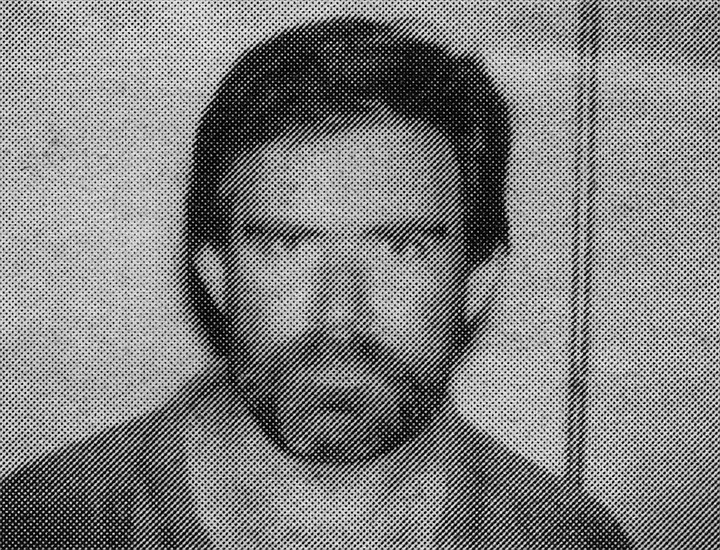
The Palms Hotel at the comer of 12th and Island Avenues, downtown, is an appropriate venue for a mystery. The tall, boxy Victorian windows peer blankly down on the passing trolleys, hiding secrets buried deep inside like pallid worms in the woodwork. Until this spring, the place was owned by a nameless trust administered by Los Angeles lawyer Robert Ballantyne, a longtime friend and business associate of Robert O. Peterson, Mayor Maureen O’Connor’s husband. The mayor’s enigmatic sister Mavourneen was said to maintain an office at the hotel, and her signature appears on checks used to pay property taxes, but she has not returned telephone calls seeking details about her connection with the building.
This May, the old hotel, as well as most of the surrounding block, also owned by the trust, quietly changed hands. Another trust, run by a corporation with the strange name of UYWHS, Inc., assumed title to the property, along with its tradition of secrecy. Buck Adams, a San Francisco lawyer and president of UYWHS, recently failed to return repeated phone calls to his office seeking information regarding the identity of the owner. After taking over the Palms, Adams put it back on the market almost immediately. Cynics note that a new $275 million city hall complex championed by the mayor for the area three blocks north of the ancient hotel is expected to give a big boost to neighborhood property values.
Who really owns the Palms? The story will remain untold until someone steps forward to unravel the web of corporations and trusts helping to conceal the identity and motives of those who have title to the daunting Victorian lady.
When my father died, he left to each of his children odd mementos of our life with him. My sister, the youngest, inherited a delicate cedar chest. My brother, the oldest son, a large part of his wardrobe. I got a pair of black military shoes and some hospital slippers.
For two years I carried those shoes with me in two moves across the American continent, but I never wore them. From time to time, I would take them out of storage, polish them, put the shoe trees back in them, and return them to the obscurity of a closet comer.
When my last pair of loafers wore out in mid-summer, I took my father’s shoes from the closet and tried them on. They were so uncomfortable that I had to leave the tops unlaced, and they gave my step an awkwardness that made it difficult to walk.
For a while, I would put on the shoes and sit on the sofa for hours, remembering the ominous sound the same shoes once made when they pounded the floor of my adolescent house. My father had a technique with his shoes. He could signal anger, fatigue, or joy with those shoes by adjusting the pressure of his footsteps.
That was the way it was with my dad, career Army pilot, authority figure, provider. To understand him, you had to understand the clues he gave you with the shoes I now wear.
What kind of man would leave his son a pair of black military shoes as an inheritance? And how does his son feel about it now that he wears the footwear he once listened for every afternoon at about 5:30?
I am...
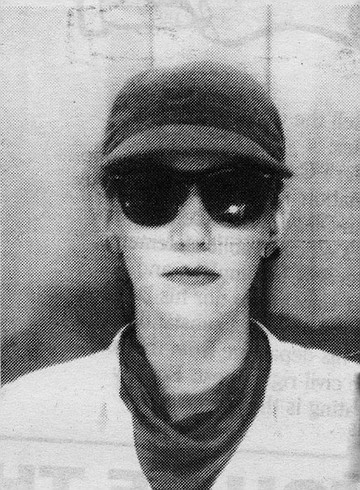
You never write the story you want to write. Sometimes the story you planned on writing, but secretly didn’t want to write, becomes, through some subconscious trickery, the story you do want to write. This also is a different story than you began with. The result of your efforts, lying somewhere between what you hoped to accomplish and what you should have accomplished, is unrecognizable as your own, a bastard child.
When the transformation from what you thought you were going to write to what you did write occurs, people like to say that the story has “taken over.” As if the story already existed, and the writer, by scraping away at it like an archaeologist uncovering ancient treasure, revealed it.
Nonfiction writing has little more chance of revealing truth than fiction does. No matter how straightforward the factual event being written about, the writer by necessity (or editorial decree) imposes parameters on it and picks and chooses from reality to fit within them. But even when presenting hard facts, words remain soft, with shadings and associations that differ from writer to reader.
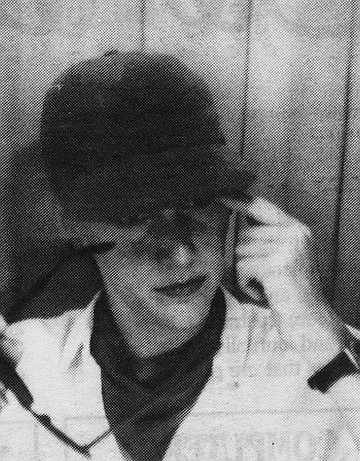
A written piece is often labelled “objective” when it is merely too boring to provoke questions in readers’ minds: if you write that a cat was brown, for example, few will consider the point worth disputing.
Every written story is a detail from a much larger picture. Outside the framed area are other stories, existing in the minds of other participants, observers. If we say the entire picture is the story, not the detail, then we could argue that every story remains unwritten. This is a nice defense for writers; no one can tell you “it’s been done before.”
Most of the stories in this city that don’t get written are better left unpublished; their genesis is an overripe concoction of gossip, speculation, and reportorial fantasy. More frustrating, to readers and journalists alike, are the articles that are published but fail to tell the whole story. Two examples:
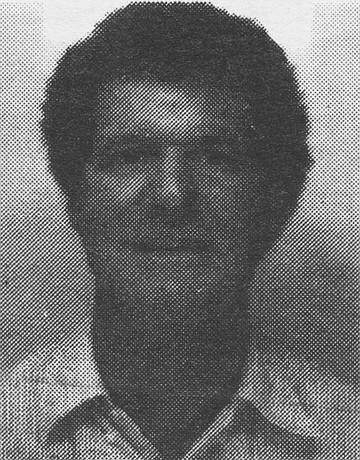
— Herb Cawthorne’s very abrupt “resignation” from the top job at the San Diego Urban League. The league’s official public statements were terribly incomplete, and neither Cawthorne nor his lawyer would say anything substantial about his departure from the very visible civil rights post. Equally frustrating is the story of the recent hiring of Cawthorne as a top-ranking staffer by the
San Diego Chamber of Commerce. Chamber president Lee Grissom was conveniently out of town on the day of the announcement, so there were no answers to questions about whether the new job was a “payback” for Cawthorne’s help in defeating last year’s growth-management ballot measures, which were opposed by many of the bankers and businessmen who are members of the chamber.
— News stories about the new bayffont convention center usually acknowledge its multimillion-dollar cost overruns, but the more substantial questions that should have been examined six years ago still are unanswered. Why did then-mayor and environmentalist Roger Hedgecock support the construction of the bulky concrete building that seals off acres of waterfront land and assures that even more bayfront land will be covered with hotels and parking structures? Why build that concrete behemoth on a water table that must be constantly pumped out so the building isn’t flooded? And most importantly, why build it in a section of town that’s already thriving instead of farther uptown, near 12th and Broadway, where the building and conventioneers would help invigorate what city planners politely refer to as a “transitional” area?


A number of years ago, I was persuaded by a guileful siren with designs on the music biz to share my lowly downtown apartment for “a couple of days” with the great but virtually unknown jazz balladeer Earl Coleman. Why a singer of near-legendary stature among critics would choose to bunk in a hovel with a semi-professional writer of limited prosperity should have made me suspicious. But here was a chance to spend time with a survivor of the swing-bop wars and the man who had recorded “Dark Shadows” with Charlie Parker and Tour de Force with Sonny Rollins.
Predictably his fortunes in San Diego proved dismal. In two guest appearances with guitarist Bill Hollman, one at City College and one at Chuck’s Steak House, the response was cordial but hardly monumental. From that point, Coleman worked a monthlong engagement in my apartment. The manipulator who had encouraged him to come here from New York abandoned him, and a combination of inertia and forlorn nostalgia set in. His time was spent lying in bed listening to Nat Cole and Dexter Gordon, amid the bric-a-brac of old newspapers, record jackets, clothes, and other emblems of squalor, staring at the ceiling and citing a common fallacy (“I thought writers made a lot of money”).

With little else to do, he spun long, fascinating semi-soliloquies about Bird, Lady Day, Sarah Vaughan, Eckstine, Cole, Jefferson, Bing Crosby, George Wein, club owners, record producers, drug addiction, and racism in the music business, all detailed with the pugnacity and authority of a punch-drunk participant.
But Earl grew tired of eating wienies and rice and watching Beaver with me, so he wired his girlfriend for fare home. As I deposited him at the Greyhound depot, we tentatively agreed to collaborate on a biography, an exciting prospect aborted when discriminating thieves pilfered my tape collection.
I never heard from Earl again, but in the last couple of years, he has released a new album and has had an old Riverside set reissued.
An occasional mention in New York journals attests to his continued activity. Sadly, the proposed biography remains the big one that got away.
His name: Peter Graham, the former operator of the San Diego Sports Arena. The local media ripped him from one end to the other during his outspoken 14 years in San Diego. The media seemed to be angry with him when he turned the arena around after long-time local favorite Bob Breitbard failed. One local writer even tried to blame Graham for the loss of the NBA Rockets, forgetting that Peter wasn’t even around when Breitbard sold the Rockets to Houston. Graham was wrongly blamed for everything from the loss of the Republican convention and the Gulls hockey team to the departure of the NBA Clippers, with no credit given for his bringing the NBA Final Four tournament and two hockey teams to the city, bringing back the NBA in 1978, financing the Ali-Norton fight here, and making financial concessions to the SDSU Aztecs and the struggling Sockers.
Graham is a man who likes his scotch, tells the truth, and refuses to cater to the press. He is brash, arrogant, opinionated, and loyal to his employees, as he proved when he retained Les Land after Land publicly criticized him. In the end, Graham’s own fellows on the Graymont Corporation board fired him. Perhaps they couldn’t stand the heat of the media and caved in with a gutless display of disloyalty. It’s a story I’ve always wanted to write but never did.

When I heard that Hunter S. Thompson would be coming to San Diego in January of 1988 for a Super Bowl Eve lecture, I resolved to write a story about his visit. My plan was to follow the celebrated gonzo journalist around town and chronicle his adventures in a rambling, first-person narrative not unlike his own Fear and Loathing in Las Vegas. But since Thompson had made it clear to the promoter that he didn’t want any reporters tagging along, the only way I could get my story was to go undercover.

So I did. Passing myself off as the promoter’s assistant, I picked up Thompson at the airport, and for the next three days — and nights — I was his constant companion. He was every bit as outrageous as I had expected him to be, trashing his hotel room, throwing temper tantrums in restaurants, doing drugs, drugs, and more drugs. But he was also a troubled man, a lonely man, and we had some pretty deep and personal conversations. He literally cried on my shoulder about how his girlfriend wasn’t returning his phone calls, about how hard it was to live up to his image, about how he hated speaking engagements and could only overcome his shyness by getting real fucked up.

The closer we became, the more ashamed I was about my deception. Hunter never would have opened up this way to a reporter; he was clearly going through some rough times, and he desperately needed someone to sound off to. For whatever reason, he trusted me, and I could not, in good conscience, betray that trust. So I never wrote the story.
Late one summer afternoon in Ocean Beach I was headed toward the sand with my beach chair when a well-dressed man in his 60s hailed me to stop. He said, pointing, “Is that the Pacific Ocean there?”
I looked him over. Not a drunk. Good haircut, neat, retiree slacks and sport shirt. He was standing next to a dirty Ford Falcon, and sitting on the driver’s side was a woman who looked like a peasant girl from Mexico. She was wearing a washed-out calico shift, and her hair was braided in a thick, black rope. She was looking at me with an uncertain smile.
I said it was the Pacific Ocean.
“You sure?” he said, tilting his head toward me, eager for sincerity.
No doubt in my mind, I said.
He looked back at the girl with a told-you-so laugh, and she jerked her head away. He thanked me and headed back to the car, to the passenger side.
Later, on the beach, I tried to figure. He was a pensioner in Guadalajara who had run off with the servant. It got to be her turn to drive, and she had become so lost, they didn’t know what coast they were on.
Nah.
He had bribed her to bust his way out of a convalescent home in Reno, and now she was scared and was trying to scare him, telling him she’d driven down to the Sea of Cortez or maybe the Gulf of Mexico. Yeah, that was it: He was checking to see if he wasn’t in goddammed Texas.
Now that’s a story, I thought, and ran back to where they had been, but they were gone.
First lines of the novel I haven’t finished:
“I’ve never my whole life once been with anyone who took it slow enough,” she said.
“I will.”
“You then. Okay.”
1) Well, maybe “The Next Time,” but Henry James already wrote that. (Is this a trick question?)
2) Every story I ever did write, but somehow revised and improved more in accord with what I meant to write. (If I could have written it, I would have.
3) A candid discussion of the conditions under which San Diego film critics are granted admission to advance screenings. Whereas New York or Los Angeles ones are granted this in private screening rooms in the company of their fellows, we locals must jam in with holders of free passes doled out by pop radio stations — a method that seems guaranteed to round up a multitude of nitwits. Still, I wouldn’t want to say something to get me crossed off the invitation list.
4) As either a substitute or an atonement for No. 3, an orison of thanks that I am commissioned to write about movies instead of theater or music; or in other words about people who live in New York, Los Angeles, London, Tokyo, etc., instead of down the block.
5) A review of — oh, let me see, out of all the movies that could have come to town but haven’t — Alain Resnais’s Love unto Death. If and when that gets knocked off, a mountain remains.
6) My retirement announcement.

To temper the angst that staggered me when I left San Francisco, I went looking for a cup o' joe. I found burnt brew and scorched milk. They called it cappuccino.
Far from home and lonesome, I wandered cafés. When the bean was right, the foam was airy. Not glass mugs, damnit, cups and saucers. Bright Italian ceramics.

Then I found it. Right in my neighborhood, where Washington meets India, I pushed open the door and smelled home — French roast beans, the hint of chocolate and cinnamon. People sat outside at round tables, reading, talking, watching the cars on I-5.
“A double cap, for here,” I said, watching her pull hard on the handle, hearing the high pitch of the spray steaming milk. She slid the caramel-colored cup and saucer my way, adding a small spoon.
Creamy foam perched on the cup like meringue. Tvo fingers of espresso seeped brown around the edges. I stirred it slowly, not rushing the relationship of coffee to milk. It tasted like North Beach.

I had seen my relocation as a sad story, but now my cup was full. I’m there most mornings, sitting in a red chair, sipping a single. My suntanned hands grab the “Calendar” section of the LA. Times. How did I stand that fog in the summer?
In the many years that I’ve lived in the beach area, I’ve only walked along the edge of the ocean without ever entering it. The sight of the smallest wave would put me in a panic; I couldn’t gaze at posters of surfers riding the white water without experiencing fear. And I did no better in a swimming pool. About five years ago, my sons took me to Las Vegas for Mother’s Day. As we sat around the pool, with me a fixture in a chair, I was suddenly and for the first time intolerant of my phobia and resolved to do something about it.
The memory of my swimming lesson a few weeks later remains brilliant: I wore the top of a wetsuit, a life-saving jacket, and, absurdly enough, inflated armbands that are used to keep small children afloat. And I stood knee-deep, the sole occupant of a private pool, weeping copiously. During the course of that summer, I shed tears equal to the amount of water in the pool, but at the end of it, I shed my life jacket.
It took two more summers before I was able to go in without flotation devices. The woman whom I call “my swimming teacher” never lost faith in me; and during the moments when I lost all courage, she would croon, “Now, we’ll just do a little froggy. Now we’ll make a windmill. Now I’ll show you how to try an arrow.” After five summers, I am water-safe, can float on my back, side-stroke the length of the pool. The feared arrow — pushing off and floating face-down — is now my favorite.
This is not like winning the Rough-Water Swim. Except for me.
I grew up worshiping the Beat writers, and it was thrilling to know that, as a journalist, I was in a position not only to meet many of my heroes but to sit down and talk with them at length. Living and working in the San Francisco area made this especially feasible. Over the course of a couple of years, I managed to interview the poets Gregory Corso, Michael McClure, Allen Ginsberg, and Philip Whalen. But I still coveted two: Gary Snyder and William Burroughs.
Earlier this year, I thought I finally had Snyder in my crosshairs. A struggling arts magazine asked me to do an interview with the Pulitzer Prizewinning poet, who was slated to be lauded at a local booksellers’ function. I tracked him down there. When I told him I had interviewed his great good friend Whalen, he politely asked me to send him a copy of that piece. I did so; he wrote to me saying he’d like to get a better idea of the sort of questions I planned to ask him. Once again, I complied. A bit later, I received a postcard from Snyder’s Sierra redoubt, in which he declined to be interviewed. “I write my own prose,” he said.
A few weeks ago, I picked up the local newspaper’s Sunday magazine section and found Snyder’s four-color portrait on the cover, with an interview piece inside. Oh, well. Maybe Burroughs will happen by one of these days.

A year and a half ago, I made my annual trek to a beach in Baja California, a harsh stretch of coast in the most desolate part of the peninsula. The wind blows constantly there. Soon, a fine dust coats your teeth, collects in the comers of your eyes, turns your skin gray. After a few days of tidepool baths, your hair feels like wire. So why go? The place has a brutal kind of beauty that soothes. And the surf is excellent.
I arrived at sunset, after a 14-hour drive. A young woman greeted me. Her face was sunburned and wind-chapped, her nose dripped, and her hair had been weathered into bleached steel wool. She seemed hungry to talk.
Annie had been living in a tent on that beach for eight months. “Now my life revolves around the tides,” she said. High tide for fishing. Low tide for finding abalone, washing dishes and laundry, shampooing hair. Though she seemed lonely, she didn’t regret leaving behind the big-city frenzy. “God didn’t mean for us to drive around in Mercedes-Benzes and Porsches.” Her only link with modern life was the radio news out of Los Angeles. “And God didn’t mean for us to get shot off our front porches either”
As I left for home a week later, she told me, “I always wanted to be born 100 years ago. This is almost as good.” Several months later, I drove back down to interview her for a story. She had moved on.

When I was a kid, my heroes were Woodward and Bernstein. “Nixon” was a swear word. I hurried off to journalism school, eager to expose government obscenity and maybe be a big hero myself one day. But it was not to be.
When I finally became a journalist, Iran-contra was going down: a scandal so dark and insidious it makes Watergate look like a fraternity panty raid.

Now, the bad guys were the heroes. Ollie was applauded. Ronnie was lauded. No resignations. No flurry of legislation. No jail sentences. Journalists became the bad guys for always bringing it up. Editors don’t want to hear about it. Last month, Christie Institute head Danny Sheehan blew into town and read from senate hearings. Contras smuggled drugs. Ollie knew all about it. CIA planes flew loads of guns to Costa Rica and brought back planeloads of cocaine for U.S. consumption.

I was the only journalist in the auditorium that night. All the papers and TV stations told the local Christie Institute organizers things like: “Yeah, Sheehan’s probably right, but we won’t be coming.” Not even for their own education, journalism be damned.
So I didn’t write my big hero piece. The Christie Institute still chases these gangsters in unsung obscurity. Americans still think Bush wants to stop drug traffic. And Reader cover stories still go to gall bladder operations and what they did every day in 1939.

Gail and I used to hitchhike to the Hilton Hotel with our children, caravan style. We used the facilities as if we were Conrad Hilton’s daughters. It was at the Hilton pool that I noticed a bump the size of a kumquat peering over Gail’s bikini top. Later, when I telephoned the Anderson Clinic in Houston, where she was recovering from radical surgery, she talked about apricot pits and faith healers. By the end of that year, Gail had gathered her six children and whatever strength she had left and flew to Pittsburgh, where her ex-husband was working, so the family could be together when she died.
The next summer, a man who had inspired me to write limericks keeled over dead. In September, when our neighbor returned home from his first day at junior high school and opened his closet, he found the overdosed body of his 16-year-old brother. I told the news to a confidante; her husband’s recently cremated ashes lay in a cigar box on the table where we were eating clams. The following Monday, en route to return a library book, my father suddenly collapsed on Orange Avenue. When he reached Villa View Hospital via ambulance, he was pronounced DOA, the coroner said.

Within months, three of my friends’ teen-age sons were killed instantly when trucks collided with their motorcycles. During that decade, death was everywhere. At supermarket check-outs, Elvis’s corpse was on tabloid covers. Our next-door neighbor tortured and killed his two-year-old stepson. On Christmas Eve, the friend who’d notified me of Gail’s death called from Berkeley to announce that two thirds of her own family had just been wiped out in Jonestown.

I wanted to write about a woman I’ll call Sandy; and, actually, I did write about her. But I wrote a short fictional account of a crime she committed as a teen-ager, and it was very bad fiction. If I ever see her again, I’ll ask her to tell me the story again, in fine detail, start to finish, and then I’ll try to write it right.
The last time Sandy called her best friend in San Diego, she was desperate in San Francisco, broke, and no doubt in trouble with the police again. For the past year or so, whenever she’d visit town, Sandy would tell people she didn’t use crystal meth anymore; the friends she’d once hung with didn’t believe her. Sandy wasn’t so crazed as some who get chewed up by crystal. But she had been using hard drugs since she was a kid — she’d laugh, telling how her foster mom smuggled speed to her when she was in CYA.
The California Youth Authority hosted Sandy for a time when she was a teen-ager. She and a girlfriend had gone into a liquor store, robbed the clerk, at gunpoint, I think. The two took the money and then locked the clerk in a walk-in cooler. As they left, Sandy started feeling bad about the guy shivering in the cooler. She went back and let him out. Good for him, bad for her and her friend. They sped off; he called the police. Sandy warned her friend to get off El Cajon Boulevard and onto the side streets, but her friend kept zipping down the Miracle Mile. And within minutes, those two dollies were BUSTED.
Samson pulled down the Temple of Dagon on the heads of the Philistines. Quite a few survived. Their descendants now live in San Diego, where they misbehave regularly during opera and orchestra performances at the Civic Theatre and Symphony Hall. They buzz and sibilate during soft passages, they shout egregiously at one another during the loud ones. They jingle their bracelets, tear open cellophane-wrapped candies with painful slowness, cough violently during delicate pianissimos, and smile inwardly as their beeping digital watches sound off on the hour. They have never had an aesthetic epiphany in their lives and are determined no one else will either.
Sometimes their antics defy credulity. One couple recently brought a portable, battery-operated television set to the opera. They followed a football game, the pale, bluish light from the screen flickering over the faces of their immediate neighbors. During breaks in the performance, distant confederates would cry out, “What’s the score?”
More normally, the boredom and boordom of such creatures manifests itself in lengthy, noisy perusals of the program booklet, even in the dark; they flip the pages back and forth as if engaged in a profound research project. When truly desperate, they resort to snacking on something. I have seen, heard, and smelled them eating unshelled pistachio nuts and sunflower seeds.
The ballet, of course, presents such cultural vandals with the irresistible temptation to bring along their hyperkinetic kiddies. A new Samson is sorely needed.

In 1981 I proposed a story about the American Medical Research Expedition to Mount Everest. Although AMREE’s leader, John West, and another participant, Christopher Pizzo, were physicians at UCSD and Scripps Clinic, respectively, my editor said the piece wouldn’t be local enough. But secretly, I cradled the hope that if I wrote the story and it was interesting and well written enough, and if I was lucky enough to submit it at the right time, the editor still might bite.
I read up on Everest’s history and bought a tape recorder. I got help wrapping my one tie around what passed for my one dress shirt and sallied forth into the circles of high academia and adventure, attending lectures by West and finally arranging interviews with both West and Pizzo. After one of those interviews, I even bought from Pizzo a numbered picture he’d taken of Makalu peak at sundown, all godly-gold and spectacular.
I struggled life and death to write what I had: some very basic scientific poop about AMREE’s unique purpose, a bit of history, some amazing tales about AMREE’s luck (Peter Hackett’s slip at the Hillary step, a potential fall of 8000 feet more or less straight down, his foot catching on a rock and, while upside down, Hackett’s grasping for a grip in the snow, finding a secured rope left over from a previous expedition; Pizzo using a tent pole in place of his lost ice pick and finding one left over from a previous expedition; the woman’s body left over from a previous expedition, frozen facedown and perfectly preserved).

Neither the Reader nor California magazine wanted the story, because it wasn’t a San Diego or a California story. I wonder whether either of them thought it was any good. I was afraid to ask. But I’ll use the compensation from this piece to frame that picture I bought from Dr. Pizzo, a reminder that one man’s success can be another’s failure.

I met Thomas Earle last December in a Hillcrest laundromat, where he and a buddy had fled the night chill. They were homeless alcoholics. Earle lay curled up next to the dryers. His companion paced back and forth, flailing his arms and mumbling obscenities. People edged past them, eyes fixed on coin slots.
“Leave the nice people alone,” Earle admonished his friend. He spoke with a British accent. I stole a look at him. His face was ruddy, with a road map of capillaries and a long Irish upper lip.

“Okay, what movie is this from? ‘Play it, Sam.’ ” His friend shook his head and uncapped a flask.
“Casablanca.” Earle cackled triumphantly. “Okay, here’s another one....” And so it went, for the next half hour. I soon found myself volunteering answers.

We sat and talked. Earle said he had been a film editor in Hollywood during the ’40s and claimed to have worked with all the big stars. Reagan. Bogart. Heston. He wanted to dry out and start working again, he told me. “I could get a job with Simon & Simon right here in San Diego!”
I didn’t tell him that except for the opening credits, the detective show was filmed in L.A. He helped me carry my wash out to my car. I shook his hand and pressed a bill into it. He wished me luck.

I wanted to write about Thomas Earle’s heady tumble from Lotusland to the streets of San Diego, but my editor dismissed it as just another homeless tale. I might still prove him wrong.
“Very, very interesting,” Dr. Finges said.
I was sitting up straight on his office desk, my mouth open. Dr. Finges stood before me in his white smock, bent at the waist, surveying inside my mouth. His crest of straight orange hair faced me at eye level, combed back from a glossy forehead.
“You can close,” he said.
I closed my mouth. He straightened, took a backward step, folded his arms. Spectacles magnified his eyeballs.
He addressed me. “As the constitution betrays the will, each psychic tool, each element makes happy residence in a sickened conceptual playground; pretty forms fall away, exposing the featureless sludge of unfiltered experience. The overwhelmed sensorium then retreats — as it must — to childhood’s magic, entrenching the most absurd symbolic substitutions, resulting finally in the characteristic pasty, pink sores that populate the oral lining.”
“I’ve been having dreams,” I said.
“Of course.” His face was sweaty. “I could recommend you for treatment at the institute, even if, as I’m told, the trustees no longer sanction my judgments.
Regardless, I tell my patients it is better to seek redemption within the paltry sphere of their own lives. For one thing, you never know what kind of doctor you’ll get.” White paint was peeling around the door frame.
“You are a journalist?” he asked. I nodded. “Yes.”
“You write about burglaries and fundraisers?”
“Uh, more like I do portraits of interesting things.”
“So. It is now perhaps necessary that you portray something exalted. Something high-flown, elevated above the mean exasperations of your temperament and class. A model of health to emulate.”
“Maybe an animal story.”
“Why don’t you write,” he said slowly, “about monks ”
“Are there monks in San Diego?”
“Might be.”
I left, pushing my way out the exit door, feeling the sun again. “Monks,” I thought, “monks.”

EL CAJON, March 11, 1975 -Patty Hearst, the abducted heiress-turned-bank robber, yesterday emerged from the shadowy realm of revolutionary politics by contacting El Cajon Daily Californian reporter Jeannette De Wyze. “I want to go home,” Hearst told the startled cub reporter.
Hearst revealed that she has been living in a Santee trailer park, her physical appearance substantially altered, for the past eight months. She told De Wyze that during that time she began reading the East County newspaper and was struck by the empathy and clarity of thought revealed in De Wyze’s articles. “Sure, I could pick up the phone and give Walter Cronkite my story,” Hearst said. “But he’s had a lot of big scoops. Why not help out someone whose career is just getting started?”

“I’ve dreamt about getting this call,” gushed De Wyze. “I was in a university journalism class when the news first came over the wire service that Patty was kidnapped. Ever since, I’ve felt close to the story. I started working for the Californian last year, and whenever things got really boring, I would tell myself that Patty could be living in some dump in Santee....”

Hearst gave De Wyze a lengthy exclusive interview before calling the FBI and promised that the local reporter could cover her upcoming trial, collaborate on her autobiography, and write the screenplays for any movies or television docudramas chronicling Hearst’s bizarre saga.
The night had grown still now. Too still. The incessant song of the cicada had stopped. In the faint light of a new moon one could see from our mountain top bunkers in Pleiku across the grassy plains of the Central Highlands almost into Cambodia. I looked over my shoulder to a higher bunker to see my father, a visiting correspondent, who was covering my back with an M-60 machine gun. I was partial to the single-shot M-79 grenade launcher whose golden bullet had a kill-radius of 50 feet. My father and I had fought with each other on and off all my life. How odd to be in these mutually defensive positions in a war that we disputed. Suddenly, on my left front, a trip flare in our wire went off, and then all hell started breaking loose as we started taking fire and hit the claymores. But let me tell you how this whole thing all started.
Dad had long been a subscriber to every “Field and Game”-type magazine ever published. He didn’t like to hunt, but he liked guns, and fishing and flashlights and gadgets of all kinds. I liked his schedule and so I thought that being a writer might be pretty cool. He would admonish me that it was really hard work, but if I chose to do it, never, never to start a story as they did in his favorite magazines. You know, like:
“Bill and me should have known that we were in trouble in this kind of thick brush. The wind was at our back. We were sweating like pigs, and our wives could have smelled us at home for Chrissake. Suddenly there was a crashing sound and the next thing I saw was the enraged face and blood-red eyes of the grizzly just before its fangs tore into my flesh. The salty taste of my own blood swilled in my mouth. But let me tell you how this all started.”
Anyway, someday I may finish the Vietnam incident on Monkey Mountain with my father, but for the time being.... Got’cha, Dad!

It was in September of 1988 that the item appeared in Tom Blair’s column in The Tribune: “John Brizzolara, whose potboiler Wirecutter was a big seller for Doubleday last year, has taken a job here to gather the atmosphere for the sequel.... Brizzolara’s working as a bouncer in a downtown topless bar”
This item, planted by a reporter drinking buddy of mine, had certain inaccuracies. I was working not as a bouncer but as a bartender, for one night, not researching anything. I needed the money.

I had answered an ad for bartenders: a Kearny Mesa address. I showed up early at one branch of San Diego’s landmark flashdance emporiums. The guy who talked to me told me it looked good; his name was, say, Dick. Dick said he wanted to try me out behind the bar. I worked frenziedly until 2:00 a.m. I got very little ogling in. Dick collected the tips I had earned: $90. “It’s our system,” he said. “You’ll get it in your paycheck.”
“Do I get the job?” I asked Dick. “Yeah. Call me later in the week; I’ll put you on the schedule.”
Two tuxedo shirts, bow tie, a pair of black dress pants cost me $86. Dick avoided me for two weeks. No job. I heard he did the same thing to five or six other bartenders.

The story I wanted to write but didn’t is about how I found Dick’s address, went to the post office, and filled out a change of address form, shunting all his mail to Cairo, Illinois, for the next three weeks. That’s a federal crime; naturally, I didn’t do it, so I couldn’t write a story about how I did. If anything like that happened to Dick, it must have been one of those other bartenders.

I want to write lies. Big fat ones with no regard for the sacred principles of responsible journalism. I want to write things low, reprehensible, and truth-twisting. Piss on the gods of the press, I choose to blaspheme.
I want to write that my friends didn’t die. That their parents and children and dreams didn’t die. I want to change their stories so that they were never really robbed or raped; their wells weren’t poisoned and their lives weren’t shattered. No war, no cancer, no divorce.
I’d love to plant these hollow accounts and then by some magic, see them burst into truth. Little by little, then, I could fashion the New Reality wherein crime, suffering, and disease were anything but commonplace. By my words alone, I could banish the banality of evil, and there would be true power in my pen.
I realize this is hopelessly naive. I know that life is tough and bad things happen and maybe the best anybody can ever do is just to find and report the clear truth about it all and go on. Trying to write away humanity’s hurt only adds to the mess.
But the thought still troubles me. The stories I wanted to write, but didn’t, are falsehoods and fabrications. And no matter how much I want to write them, I can’t.

It’s the Fourth of July, and the wife and baby and I are tooling about up on Palomar Mountain. Spring comes late to the high country, even in these benign latitudes; and somewhere between nowhere and no place special, my wife spots a stand of shaded wildflowers that makes her let out a holler. I brake hard, hop out, and dive into the bush, camera and field guide in hand.
The flowers were lilies, the outrageous Lilium humboldtii, which, if you’ve ever seen them, look as foreign to the country as salmon spawning in Mission Valley. San Diego only has three native lily species; and for some time, I had been on the lookout for them, imagining, as a writer will, this private treasure hunt expanded into a clever, expository treatise. But I’ve never seen any native San Diego lilies again.
Well, it’s not “How I Spent My Summer Trout Fishing with Thomas Pynchon,” but what did you expect?

I always wanted to write a story about Sufi-dancing fruitarian dope-smuggling wife-battering white supremacist folk singers who lead double lives as corrupt politicians or defense contractors or greedy developers by day and cross-dressing illegal alien hypnotherapist fundamentalist skinhead hookers by night. But that sort of thing gets published every week in the Reader, so here are some other stories I really wanted to write but didn’t:

There was one about a man called the Mole, who lived in a sewer drain with a pet canary for over a year, subsisting on garbage and dead rats (a true story — I met him once outside the central library). And one about a Hollywood starlet who left her minks and diamonds to become a nun and work in a Tijuana jail (also true).

I was dying to reveal the Secret Life of Sheriff John Duffy and find out how much Gloria McColl spends on hairspray. And I kept looking for the perfect Reader events story, like a walking tour of East San Diego’s meth labs or a meeting of the Democratic Socialist Golf Widows of Scripps Ranch.

But if I had to choose, I would have written about what the killer whales at Sea World do at night or how such fantastic beasts as basilisks, amphisbaenae, leucrocuta, and yales roam the canyons by moonlight, gobbling up skunks and possums, and sometimes a moonstruck writer....
The story was about police dogs, and I was on a ride-along with an Oceanside cop: I didn’t tell about my seeing him coldcock a handcuffed Marine during an arrest, then taunt the kid when he started to cry.

The story was about plane captains in a Navy fighter squadron: I didn’t tell about Ladies’ Night at the Miramar Officers Club, where I saw packs of desperate-looking single women pathetically climbing over each other to connect with arrogant, egomaniacal pilots.
The story was about a homosexual Catholic priest with a drug problem: I didn’t tell about why his former boyfriend came to us with the tale. It was for revenge over cutting off the boyfriend’s drug supply.
The story was about illegal migrants attacking border patrol trucks and helicopters with rocks: I didn’t tell about how the senior border patrolman who gave me a tour of the danger zones habitually referred to the migrants as “wets.”

The story was about Southeast San Diego: The part about Urban League president Herb Cawthorne’s bombastic posturing in a speech before the Catfish Club left out my main impression. I thought he was using his position and the controversy over renaming Market Street in honor of Martin Luther King for personal aggrandizement and career advancement. But writing that might have been construed as racism on my part. Cawthorne has since left the Urban League, under mysterious circumstances, gone to work for the Greater San Diego Chamber of Commerce, and his passionate civil rights pronouncements have fallen silent.
The story was about Boy Scout summer camp: I left out the secret word repeated by new members during the super-secret induction ceremonies for the Order of the Arrow, an elite clique within the scouts whose members are mostly adult men. Blazing tomahawks couldn’t force the secret Indian word out of me, but I will divulge its translation: “To love each other.”

In the tradition of Mayor Maureen O’Connor’s recent sojourn as an incognito vagabond, my unwritten story required that I, too, adopt a temporary identity. To succeed in investigating the realities of municipal politics, I needed to impersonate the mayor of San Diego, tit for tat. If she could worm her way through our shabbiest streets anonymously, seeking the heart of homeless darkness, certainly a regular citizen like me could embark upon a clandestine journey through city hall, searching — at least — for my taxpayer-subsidized plane ticket to Russia.
I also couldn’t pursue this story single-handedly. I required support from an accomplice, a conspirator — an appropriate Sancho Panza or Boswell type. Not necessarily a Robin for my Batman or even a Rainman-ish savant; certainly neither a trusty Tonto nor a mischievous Cheetah (not to mention a chunky prattle-monger slurping Evian water).

But whom to choose? Discouraged, I consulted with researchers at the downtown library (I assumed all those swarthy denizens studying books upside down and mumbling to themselves were researchers of some stripe — disguised Faberge egg handlers or more undercover politicians, perhaps). Speaking through a handkerchief, I inquired intently. No answers came. Instead, cryptic language, puzzling epithets, and vague incantations enshrouded me (mumbled by a gentleman pounding on a stack of atlases, or proclaimed by a wayfarer urinating across irreplaceable first editions in the Wangenheim room). And no tempting candidates for my affable amanuensis. The story goes untold.... mm
Virtually every journalist concerned with the arts has taken a position of the Helms amendment, which (in reaction to Serrano’s crucifix immersed in the artist’s urine and the Mapplethorpe photos of male genitalia) forbids agencies of the United States government — notably the National Endowment for the Arts — to fund obscene, anti-religious, or bigoted works of art. All the articles I have seen have taken an identical position: the Helms amendment is an infringement on free speech, it amounts to censorship, it would politicize the NEA and similar organizations by asserting the right of ignorant congressmen to make aesthetic judgments, and it would gravely undermine American cultural life. The story I wanted to write — but didn’t, because then everyone would say I was a redneck reactionary like Jesse Helms — was a defense of what the whole arts community is calling an act of fascism.
What I would have written was that the Serrano and Mapplethorpe works are trashy examples of everything that is wrong with American cultural life and should have been denied funds simply on the basis of their lack of artistic value; that a refusal of government to fund a work of art has not the slightest thing to do with censorship, since the publication or exhibition of the work itself is in no way forbidden; that the NEA is already thoroughly politicized, its peer-review panels consisting of an ideologically monolithic elite of “arts experts’’; that if a work of art responds to the real spiritual needs of its society, it ought to be able to find in the free market place people who need it enough to pay for it; that it is inherently unjust to force taxpayers to finance art they find offensive; and that — here’s an old-fashioned fascist rallying cry — there should be no taxation without representation.
Thank goodness I didn’t write any of that!

The Palms Hotel at the comer of 12th and Island Avenues, downtown, is an appropriate venue for a mystery. The tall, boxy Victorian windows peer blankly down on the passing trolleys, hiding secrets buried deep inside like pallid worms in the woodwork. Until this spring, the place was owned by a nameless trust administered by Los Angeles lawyer Robert Ballantyne, a longtime friend and business associate of Robert O. Peterson, Mayor Maureen O’Connor’s husband. The mayor’s enigmatic sister Mavourneen was said to maintain an office at the hotel, and her signature appears on checks used to pay property taxes, but she has not returned telephone calls seeking details about her connection with the building.
This May, the old hotel, as well as most of the surrounding block, also owned by the trust, quietly changed hands. Another trust, run by a corporation with the strange name of UYWHS, Inc., assumed title to the property, along with its tradition of secrecy. Buck Adams, a San Francisco lawyer and president of UYWHS, recently failed to return repeated phone calls to his office seeking information regarding the identity of the owner. After taking over the Palms, Adams put it back on the market almost immediately. Cynics note that a new $275 million city hall complex championed by the mayor for the area three blocks north of the ancient hotel is expected to give a big boost to neighborhood property values.
Who really owns the Palms? The story will remain untold until someone steps forward to unravel the web of corporations and trusts helping to conceal the identity and motives of those who have title to the daunting Victorian lady.
When my father died, he left to each of his children odd mementos of our life with him. My sister, the youngest, inherited a delicate cedar chest. My brother, the oldest son, a large part of his wardrobe. I got a pair of black military shoes and some hospital slippers.
For two years I carried those shoes with me in two moves across the American continent, but I never wore them. From time to time, I would take them out of storage, polish them, put the shoe trees back in them, and return them to the obscurity of a closet comer.
When my last pair of loafers wore out in mid-summer, I took my father’s shoes from the closet and tried them on. They were so uncomfortable that I had to leave the tops unlaced, and they gave my step an awkwardness that made it difficult to walk.
For a while, I would put on the shoes and sit on the sofa for hours, remembering the ominous sound the same shoes once made when they pounded the floor of my adolescent house. My father had a technique with his shoes. He could signal anger, fatigue, or joy with those shoes by adjusting the pressure of his footsteps.
That was the way it was with my dad, career Army pilot, authority figure, provider. To understand him, you had to understand the clues he gave you with the shoes I now wear.
What kind of man would leave his son a pair of black military shoes as an inheritance? And how does his son feel about it now that he wears the footwear he once listened for every afternoon at about 5:30?
I am...

You never write the story you want to write. Sometimes the story you planned on writing, but secretly didn’t want to write, becomes, through some subconscious trickery, the story you do want to write. This also is a different story than you began with. The result of your efforts, lying somewhere between what you hoped to accomplish and what you should have accomplished, is unrecognizable as your own, a bastard child.
When the transformation from what you thought you were going to write to what you did write occurs, people like to say that the story has “taken over.” As if the story already existed, and the writer, by scraping away at it like an archaeologist uncovering ancient treasure, revealed it.
Nonfiction writing has little more chance of revealing truth than fiction does. No matter how straightforward the factual event being written about, the writer by necessity (or editorial decree) imposes parameters on it and picks and chooses from reality to fit within them. But even when presenting hard facts, words remain soft, with shadings and associations that differ from writer to reader.

A written piece is often labelled “objective” when it is merely too boring to provoke questions in readers’ minds: if you write that a cat was brown, for example, few will consider the point worth disputing.
Every written story is a detail from a much larger picture. Outside the framed area are other stories, existing in the minds of other participants, observers. If we say the entire picture is the story, not the detail, then we could argue that every story remains unwritten. This is a nice defense for writers; no one can tell you “it’s been done before.”
Most of the stories in this city that don’t get written are better left unpublished; their genesis is an overripe concoction of gossip, speculation, and reportorial fantasy. More frustrating, to readers and journalists alike, are the articles that are published but fail to tell the whole story. Two examples:

— Herb Cawthorne’s very abrupt “resignation” from the top job at the San Diego Urban League. The league’s official public statements were terribly incomplete, and neither Cawthorne nor his lawyer would say anything substantial about his departure from the very visible civil rights post. Equally frustrating is the story of the recent hiring of Cawthorne as a top-ranking staffer by the
San Diego Chamber of Commerce. Chamber president Lee Grissom was conveniently out of town on the day of the announcement, so there were no answers to questions about whether the new job was a “payback” for Cawthorne’s help in defeating last year’s growth-management ballot measures, which were opposed by many of the bankers and businessmen who are members of the chamber.
— News stories about the new bayffont convention center usually acknowledge its multimillion-dollar cost overruns, but the more substantial questions that should have been examined six years ago still are unanswered. Why did then-mayor and environmentalist Roger Hedgecock support the construction of the bulky concrete building that seals off acres of waterfront land and assures that even more bayfront land will be covered with hotels and parking structures? Why build that concrete behemoth on a water table that must be constantly pumped out so the building isn’t flooded? And most importantly, why build it in a section of town that’s already thriving instead of farther uptown, near 12th and Broadway, where the building and conventioneers would help invigorate what city planners politely refer to as a “transitional” area?
Comments